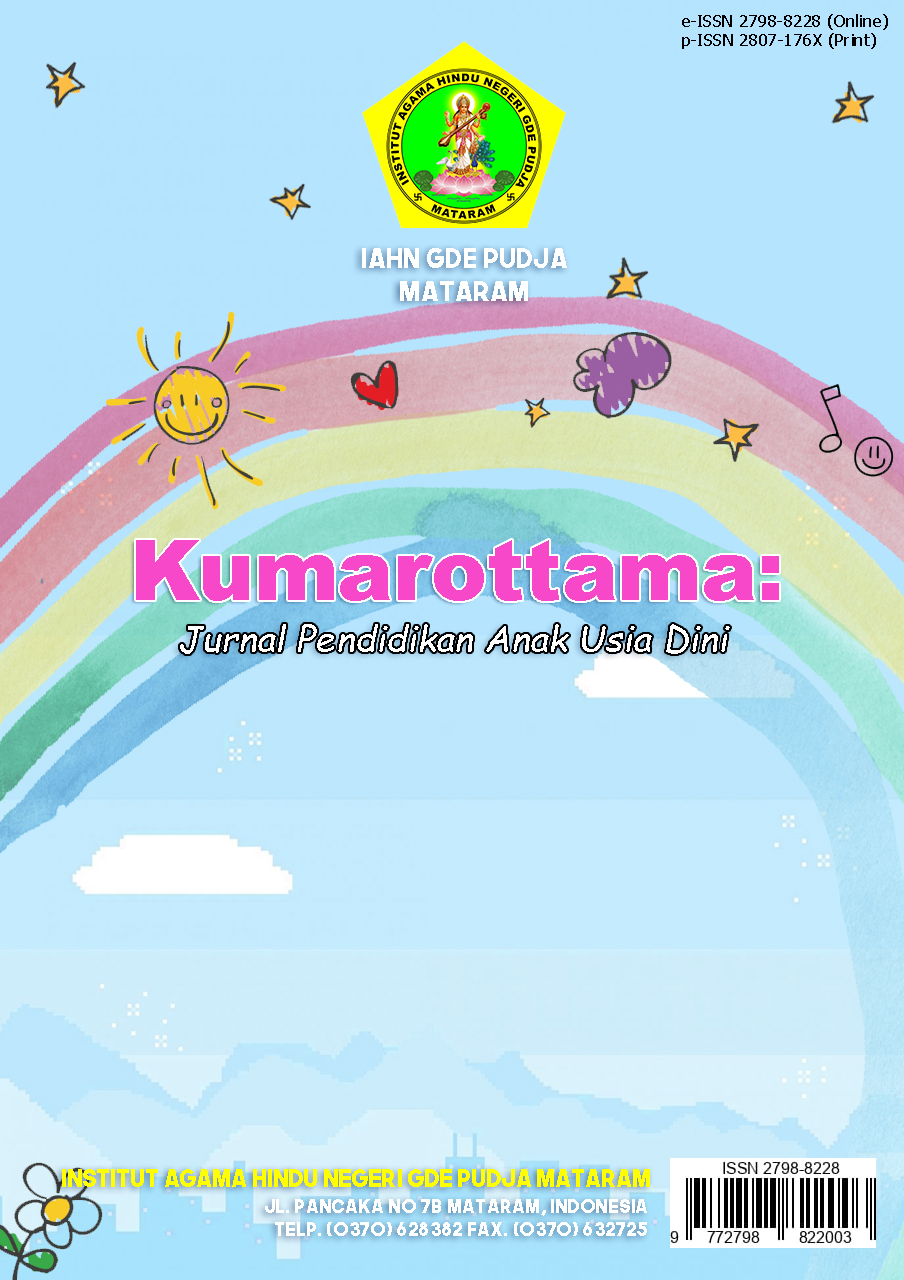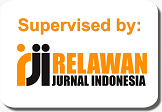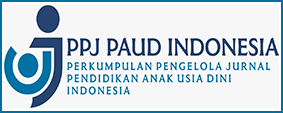Efektivitas Metode Tucker Turtle Dalam Menstimulasi Kemampuan Regulasi Emosi Anak Usia 5-6 Tahun
Abstract
Emotion regulation is a child's ability to recognize, understand, and express emotions adaptively. In children aged 5-6 years, the inability to manage emotions can trigger behavioral problems, adaptation difficulties, and obstacles in the learning process. The situation in the field shows that many preschool children often experience tantrums, have difficulty cooperating, or overreact when facing conflicts. This study aims to observe the effectiveness of the Tucker Turtle method in stimulating children's emotion regulation skills. The application of the Tucker Turtle method has not been widely explored as well as the use of effect size analysis to measure the practical impact of the intervention. The study used a quasi-experimental design, involving an experimental group (Tucker Turtle method intervention) and a control group (conventional method). Data collection techniques were carried out through pre-test and post-test observations, then analyzed using independent t-test and effect size test. The results showed that based on the independent t-test (p = 0.54), there was no statistically significant difference. However, the effect size of 0.924 indicated a large practical impact. The conclusion of the study confirmed that the Tucker Turtle method can be an alternative to stimulate children's ability to manage their emotions compared to conventional methods.
References
Auliya, M., Nurwidawati, D., Kunci, K., Diri, K., & Agresi, P. (2014). Hubungan Kontrol Diri Dengan Perilaku Agresi Pada Siswa Sma Negeri 1 Padangan Bojonegoro. Jurnal Penelitian Psikologi, 2(3), 1–5.
Bollen, K. A., & Barb, K. H. (1981). Pearson’s R and Coarsely Categorized Measures. American Sociological Review, 46(2), 232. https://doi.org/10.2307/2094981
Drupadi, R. (2020). Pengaruh Regulasi Emosi Terhadap Perilaku Prososial Anak Usia Dini. Cakrawala Dini: Jurnal Pendidikan Anak Usia Dini, 11(1), 30–36. https://doi.org/10.17509/cd.v11i1.20326
Ghasemi, A., & Zahediasl, S. (2012). Normality tests for statistical analysis: A guide for non-statisticians. International Journal of Endocrinology and Metabolism, 10(2), 486–489. https://doi.org/10.5812/ijem.3505
Gross, J. J., & Thompson, R. . (2014). Handbook of Emotion Regulation.
Hasiana, I. (2020). Peran Keluarga dalam Pengendalian Perilaku Emosional pada Anak Usia 5-6 Tahun. Child Education Journal, 2(1), 24–33. https://doi.org/10.33086/cej.v2i1.1538
Khairunnisa, Sari, F. F., Anggelena, M., Agustika, D., & Nursa’adah, E. (2022). Penggunaan Effect Size dalam Mediasi dalam Koreksi Efek Suatu Penelitian. Jurnal Pendidikan Matematika: Judika Education, Volume 5, 138–151.
Kostiuk, L., & Fouts, G. (2015). Understanding of Emotions and Emotion Regulation in Adolescent Females with Conduct Problems: A Qualitative Analysis. The Qualitative Report, 7(1), 1–15. https://doi.org/10.46743/2160-3715/2002.1985
Leo, B. C., & Hendriati, A. (2022). Perbedaan Regulasi Emosi Anak Usia 4-6 Tahun Berdasarkan Emotional Style Ayah dan Ibu. Psikodimensia, 21(1), 62–73. https://doi.org/10.24167/psidim.v21i1.3504
Madyawati, L., & Nurjannah, N. (2020). Kecemasan anak usia dini dan intervensinya (Studi kasus di TK Majaksingi). Aulad: Journal on Early Childhood, 4(1), 7–16. https://doi.org/10.31004/aulad.v4i1.84
National Center for Pyramid Model Innovations. (2024). Tucker Turtle Takes Time to Tuck and Think. Challengingbehavior.Org. https://challengingbehavior.org/
Paley, B., & Hajal, N. J. (2022). Conceptualizing Emotion Regulation and Coregulation as Family-Level Phenomena. Clinical Child and Family Psychology Review, 25(1), 19–43. https://doi.org/10.1007/s10567-022-00378-4
Palintan, A. T. A. (2019). Jurnal Pengembangan Model Pelatihan Pengelolaan Emosi Anak Usia Dini. Istiqra: Jurnal Pendidikan Dan Pemikiran Islam, 6(2), 14–21. https://www.jurnal.umpar.ac.id/index.php/istiqra/article/view/347%0Ahttps://www.jurnal.umpar.ac.id/index.php/istiqra/article/download/347/299
Papalia, D. E., Feldman, R. D., & Martorell, G. (2012). Experience human development. McGraw-Hill.
Peraturan Menteri Pendidikan Dan Kebudayaan Nomor 137 Tahun 2014 Tentang Standar PAUD (2014). https://doi.org/10.33578/jpsbe.v10i1.7699
Putri, C. I. H., & Primana, L. (2017). Pelatihan Regulasi Emosi Anak Usia Prasekolah (3-4 Tahun). Jurnal Pendidikan Anak, 6(2), 190–202. https://doi.org/10.21831/jpa.v6i2.17706
Putri, Y. A. S., & Mariyati, L. I. (2024). Hubungan Penerimaan Diri dan Regulasi Emosi Terhadap Psychological Well Being Caregiver Lansia. G-Couns: Jurnal Bimbingan Dan Konseling, 9(1), 263–275. https://doi.org/10.31316/gcouns.v9i1.6359
Sciaraffa, M. A., Zeanah, P. D., & Zeanah, C. H. (2018). Understanding and Promoting Resilience in the Context of Adverse Childhood Experiences. Early Childhood Education Journal, 46(3), 343–353. https://doi.org/10.1007/s10643-017-0869-3
Shadish, W. R., & Sullivan, K. J. (2011). Characteristics of single-case designs used to assess intervention effects in 2008. Behavior Research Methods, 43(4), 971–980. https://doi.org/10.3758/s13428-011-0111-y
Sugrah, N. U. (2020). Implementasi teori belajar konstruktivisme dalam pembelajaran sains. Humanika, 19(2), 121–138. https://doi.org/10.21831/hum.v19i2.29274
Suryani, N., Haenilah, E. Y., & Sasmiati, S. (2018). Model pembelajaran berbasis pengalaman (experiential learning) dalam kaitannya dengan pemahaman konsep sains anak usia dini. Jurnal Pendidikan Anak, 4(2), 1–9. http://jurnal.fkip.unila.ac.id/index.php/PAUD/article/view/16872
Swarjana, I. K. (2022). POPULASI-SAMPEL, TEKNIK SAMPLING & BIAS DALAM PENELITIAN. Andi.
Westphal, M., Leahy, R., Norcini Pala, A., & Wupperman, P. (2016). Self-Compassion and Emotional Invalidation Mediate the Effects of Parental Indifference on Psychopathology. Psychiatry Research, 242. https://doi.org/10.1016/j.psychres.2016.05.040

This work is licensed under a Creative Commons Attribution-ShareAlike 4.0 International License.
Authors who publish with this journal agree to the following terms:
- Authors retain copyright and grant the journal right of first publication with the work simultaneously licensed under a Creative Commons Attribution-ShareAlike 4.0 International License that allows others to share the work with an acknowledgement of the works authorship and initial publication in this journal.
- Authors are able to enter into separate, additional contractual arrangements for the non-exclusive distribution of the journals published version of the work (e.g., post it to an institutional repository or publish it in a book), with an acknowledgement of its initial publication in this journal.
- Authors are permitted and encouraged to post their work online (e.g., in institutional repositories or on their website) prior to and during the submission process, as it can lead to productive exchanges, as well as earlier and greater citation of published work (See The Effect of Open Access).











.png)














